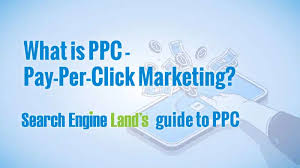what is the pay-per-click
9/8/20253 min read


A Simple Guide to Pay-Per-Click (PPC) Advertising
What is PPC?
Pay-per-click (PPC) is a digital advertising model where you pay only when someone clicks your ad. Think of it like paying for results rather than space. Instead of spending money hoping people see your ad, you pay only when they engage.
PPC ads mainly appear on search engines like Google or social platforms like Facebook, Instagram, and X (Twitter). For example, if someone searches for “best running shoes,” a shoe brand can show up at the very top of Google results through a PPC ad.
How Does PPC Work?
At its core, PPC runs on keywords. Advertisers bid on the words or phrases people are searching for. If your keyword matches a user’s search, your ad can appear.
In a flat-rate model, you pay a fixed amount per click.
In a bid-based model, advertisers compete in real time. Google or another platform decides whose ad shows up based on two factors: your bid (how much you’re willing to pay) and your ad’s quality (relevance, usefulness, landing page experience).
This means that even if you don’t bid the highest, you can still win if your ad is more relevant to the searcher.
Why PPC is Worth It
Done right, PPC is one of the fastest ways to drive traffic, sales, and visibility. Some of the biggest benefits include:
Cost control: You decide how much you’re willing to spend.
Instant results: Ads can start driving traffic within hours.
Better visibility: Your ad can appear on the first page of Google, ahead of competitors.
Targeted traffic: Reach people actively searching for your product or service.
High ROI: Well-optimized PPC campaigns often generate more value per click than they cost.
Scalability: You can run multiple campaigns for different keywords and audiences.
Who Should Use PPC?
PPC works for businesses of all sizes, but it’s especially useful for small businesses. Why? Because you set the budget. Whether you want to spend ₹500 or ₹50,000, you’re in control. Plus, you’re only paying for potential customers who are already interested in what you offer.
Google Ads – The Most Popular PPC Platform
Since Google is the world’s most-used search engine, Google Ads is the go-to choice. With it, your ads can appear on Google Search, YouTube, Gmail, and across the wider web.
To succeed with Google Ads, remember:
Pick relevant, high-intent keywords.
Create a high-quality landing page that matches your ad promise.
Aim for a good Quality Score (Google’s measure of ad relevance and landing page experience). Higher scores = lower costs per click and better placement.
Google Shopping – A PPC Powerhouse for Retailers
For e-commerce businesses, Google Shopping is a game-changer. Instead of text ads, your products appear with an image, price, and store name right in the search results.
Why it’s powerful:
Shoppers often click the first product shown, regardless of price.
It gives your products huge visibility at the exact moment people are ready to buy.
With the right bidding strategy (manual or automated), you can boost visibility while controlling costs.
Managing Google Shopping campaigns can be complex, especially if you have thousands of products. That’s why many businesses use automation tools or agencies to optimize bids and keep costs under control.
Final Thoughts
PPC isn’t just about paying for clicks—it’s about paying for results. When campaigns are well planned, PPC can deliver:
More visibility
More leads
More sales
Higher profits
Whether you’re running Google Ads, Facebook Ads, or Google Shopping campaigns, the secret is the same: choose the right keywords, write relevant ads, and send people to a landing page that delivers exactly what they’re looking for.
Done right, PPC doesn’t just bring traffic—it brings the right traffic.
👉 Would you like me to make this even more SEO-optimized (with keywords like “PPC advertising,” “Google Ads,” “digital marketing strategy”) so you can use it directly on a website or blog?
Is this conversation helpful so far?
ChatGPT can make mistakes. Check imp
